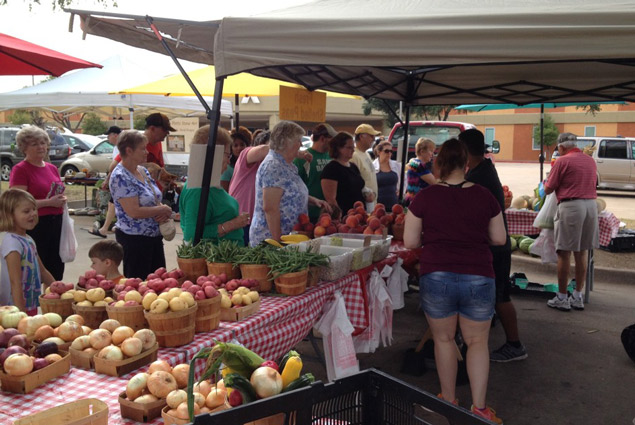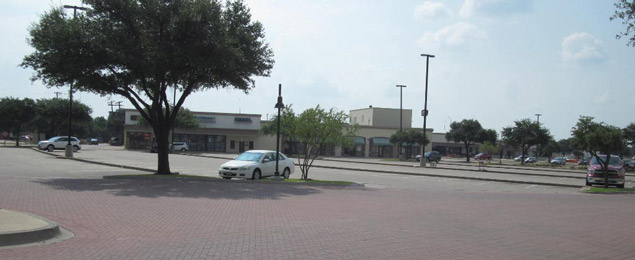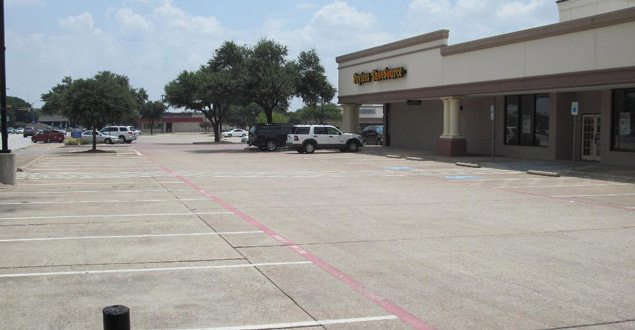
Since this is my first entry for D Magazine’s StreetSmart blog, I think I ought to start where things are best: close to home. My role here is to provide some suburban perspective on the issues of urbanism, urban development, and transportation. Many of the local news sources have been accused of either ignoring suburbs or more pointedly painting these places in one stroke. That said, I believe Patrick Kennedy’s and Jason Heid’s invitation is a sincere attempt to bring a broader geographical perspective to these issues. Broader topics will come soon enough.
My first topic revolves around what happens when older suburbs have to deal with their ever-growing urban nature and how those stakeholders react. It is much easier to see how older central cities with good bones can revive their urban cores into a human-centered environment compared to their neighboring automobile suburbs. How do suburbs accomplish this transformation, and what happens when an urban amenity tries to creep itself into old suburb? The answers are less clear given that the physical structure and cultural inertia of suburbs are tilted toward automobile dominant environments and physically separated land use patterns.
Monte Anderson, master of the Belmont Hotel, used the term “microsurgery” as a path to reviving older areas back into vibrant health. Microsurgery is a fantastic way for older suburbs to deal with their issues of aging. Given their physical challenges, these small steps can bring purpose and vibrancy step-by-step.
In Richardson, where I live, we have had to recently tackle exactly the kind of small step Anderson speaks of: pop-up and temporary farmer’s markets. Dallas residents are clearly experiencing this with White Rock Local Market, and Deep Ellum Outdoor Market.
Richardson has had one such market in recent years: Four Seasons Market run by Vincent Hirth. He bills Four Seasons as a “European Style Market.” It isn’t based solely on produce but also on craft-made foods and non-foods. Four Seasons has had several locations over a few years and finally settled on a location on West Campbell Road in Richardson for its Saturday morning market.
Richardson ordinances up until now had not contemplated these type of markets and so Four Seasons’ ability to operate was dependent on a verbal agreement with the city staff. There were a few hiccups involving vendors serving food samples and improper signage. As Four Seasons continued to operate, the city of Richardson began to draft a Farmer’s Market ordinance to deal with these hiccups.
Things began to get complicated when Vincent Hirth applied for a special permit to operate a second market on Sunday in the Richardson Heights Shopping Center. For those who don’t know it by name that is the same location where Alamo Drafthouse opened their first DFW location. The question became, “Why there?” The answer is because the area housing is attracting a demographic that is becoming more attuned to the urbanity of Dallas and less to the sprawl of Frisco. The location is also one that is accessible by foot and bike from the surrounding neighborhoods. The right use on the site can be an incremental step toward what is possible in old suburban centers and what ought to happen if they want to move forward. It all would fit right into Anderson’s style: “small incremental development around already-successful projects and executed largely by residents equipped with the right entrepreneurial tools.”
So what happened when Four Seasons applied for a special permit to operate this market? The permit was enthusiastically endorsed by the City Plan Commission but was then tabled by the City Council in order to finish an open air market ordinance to govern such operations. This did not happen without pain. The tabling of the proposal sent waves of distrust and suspicion across the community. The proposed ordinance — if passed in its preliminary form — could have ended up pushing Four Seasons out of Richardson. It read as a suburban one-size-fits-all solution. A petition was circulated in order to gather supporters and over 600 signatures were collected. The petition was never presented to a governing body but it showed that the issue was important to many people. The result of that bit of cage rattling and a well-reasoned outreach by the city management toward supporters (which included this author) ended up producing changes to the proposed ordinance that made it flexible and dare I say — more urban.
So eventually Four Seasons got its special permit to operate this market in early October. Encouraging praise was given by the city council. The Richardson City staff deserved credit for making the regulatory approach flexible and inviting. We were all ready to sing Kumbaya and hold hands.
And then it happened. The location was scuttled, or so it seems as I write this. What happened? Those pesky neighbors happened. What do you mean neighbors? I thought you told us that the neighbors were in favor of it? Well they are. That is to say the home dwelling neighbors are all in favor of it. Those home dwelling neighbors who are more increasingly riding their bikes to local stores, raising chickens in the backyard and rejecting national franchises in favor of local business.
Well then, which neighbors pushed back? The business neighbors pushed back. Better said, a handful of them did.
You see NIMBY reactions are not restricted to Gladys Kravitz complaining about the neighbor’s lawn. Like the classic “git off my lawn” suburban neighbors, business owners can invoke the NIMBY persona with drawing lines in the turf just like homeowners.
What does NIMBY really look like? It is often a vocal minority. Their fears can often revolve around “those people.” NIMBY positions can and will produce the same ills they are attempting to avoid and, of course, sometimes NIMBY concerns itself with phantom problems that aren’t really there.

All of these were a part of the objections by the minority of tenants forwarded to the property owner. In this case the biggest fear factor is that the market may produce ravenous hordes of craft cheese and organic vegetable shoppers that will result in a parking lot takeover between 11 and noon on Sunday which would be the peak time for such a market. As you can see by the pictures, taken when the market would be at peak occupancy, show that parking is at a premium. Call it NIMPL: Not In My Parking Lot. The proverbial “Those people” morphed into words like “flea market” and “third world” during public testimony.

The residential neighbors, on the other hand, are quite an adept group and not your stereotypical suburban dwellers. When Alamo Drafthouse needed a zoning change, about 125 showed up in favor of the zoning change which some people believe sets the record in Richardson for people showing up in favor of a zoning change. The reasons for neighborhood support are not solely based on wanting to buy local goods and produce like a bunch of hipsters. Those reasons also rest upon a desire to create an economically sustainable place on their doorstep. The shopping center saw a drop-off in business in the 1980s and a degradation three decades in the making. Those residents are determined that it not happen again, and they see the market as one incremental step to accomplish that goal. In a way, they are promoting the interests of both the tenants and the center’s owners Hartman Real Estate Investment Trust.
You might have noticed that I am leaving the names of the opposing businesses out of the picture, and that is for the best. Since Alamo Drafthouse was mentioned, I should add that Alamo Drafthouse does not oppose the market and completely understands its benefits. The puzzling issue is why some others do not see the benefits. Those benefits would include increased foot traffic, attention to the location on a day and time when the center is empty, and immediate neighbors being drawn in and out of their cars and into the location on foot with money in hand. After all, those reasons are what amenities like Four Season’s Market are about.
On the one hand, there is a growing residential base in these older suburbs hooked into a more urban future. They embrace it and are willing to spend their hard earned dollars on it. On the other hand there is the minority of businesses with a foot in the past invoking traditional suburban fears of too much traffic, too little parking, and too little evidence to justify these fears. A suburban past clashing with a more urban future.
Now a cynical reader might say, “Who cares about this little case?” That is a fair question actually. One answer lies in Microsurgery. First comes a one day market. Then comes a coffee shop. Then comes some hitherto unknown local amenity and all of a sudden an area can morph from having an image of mediocrity and undesirability into one that is desired and sought after.
Those futures and stories are very often small like this. They are not always mega projects or projects with seven or eight zeros attached. They are often real stories that affect people where they live. Close to home. On the doorstep.
[d-embed]
Andrew Laska is past President of the Richardson Heights Neighborhood Association. He serves on the board of the North Texas Chapter of the Congress for the New Urbanism and is the local communications chair for the 23rd Congress for the New Urbanism to be held in Dallas and Fort Worth on April 29 – May 2, 2015.[/d-embed]




